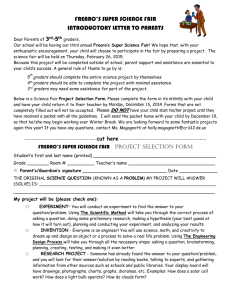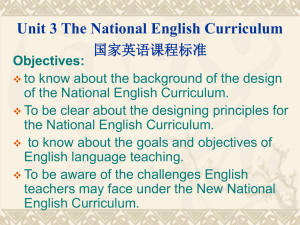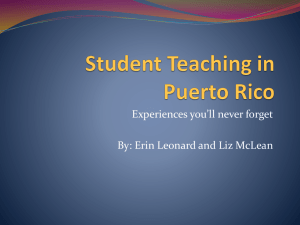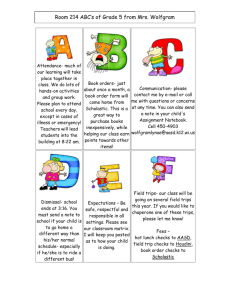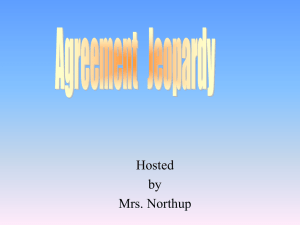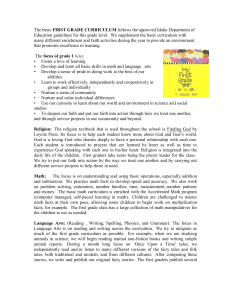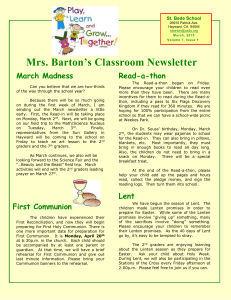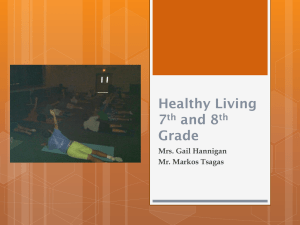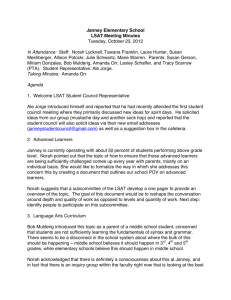The Janney Science Curriculum In Action I am in a unique position
advertisement
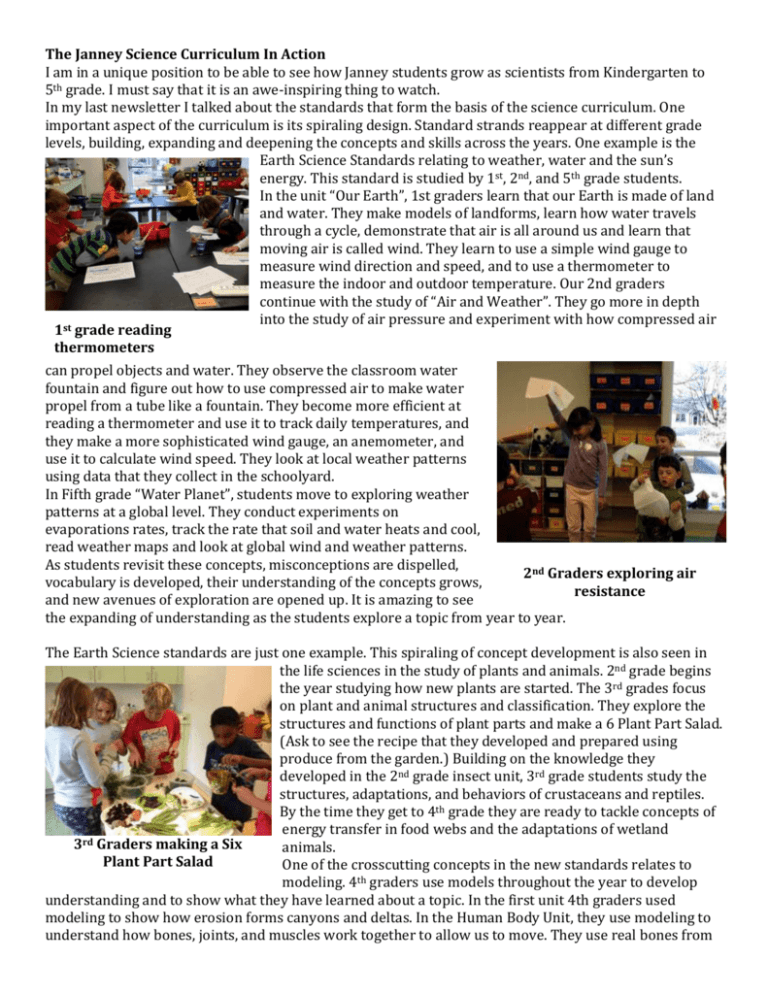
The Janney Science Curriculum In Action I am in a unique position to be able to see how Janney students grow as scientists from Kindergarten to 5th grade. I must say that it is an awe-inspiring thing to watch. In my last newsletter I talked about the standards that form the basis of the science curriculum. One important aspect of the curriculum is its spiraling design. Standard strands reappear at different grade levels, building, expanding and deepening the concepts and skills across the years. One example is the Earth Science Standards relating to weather, water and the sun’s energy. This standard is studied by 1st, 2nd, and 5th grade students. In the unit “Our Earth”, 1st graders learn that our Earth is made of land and water. They make models of landforms, learn how water travels through a cycle, demonstrate that air is all around us and learn that moving air is called wind. They learn to use a simple wind gauge to measure wind direction and speed, and to use a thermometer to measure the indoor and outdoor temperature. Our 2nd graders continue with the study of “Air and Weather”. They go more in depth into the study of air pressure and experiment with how compressed air 1st grade reading thermometers can propel objects and water. They observe the classroom water fountain and figure out how to use compressed air to make water propel from a tube like a fountain. They become more efficient at reading a thermometer and use it to track daily temperatures, and they make a more sophisticated wind gauge, an anemometer, and use it to calculate wind speed. They look at local weather patterns using data that they collect in the schoolyard. In Fifth grade “Water Planet”, students move to exploring weather patterns at a global level. They conduct experiments on evaporations rates, track the rate that soil and water heats and cool, read weather maps and look at global wind and weather patterns. As students revisit these concepts, misconceptions are dispelled, 2nd Graders exploring air vocabulary is developed, their understanding of the concepts grows, resistance and new avenues of exploration are opened up. It is amazing to see the expanding of understanding as the students explore a topic from year to year. The Earth Science standards are just one example. This spiraling of concept development is also seen in the life sciences in the study of plants and animals. 2nd grade begins the year studying how new plants are started. The 3rd grades focus on plant and animal structures and classification. They explore the structures and functions of plant parts and make a 6 Plant Part Salad. (Ask to see the recipe that they developed and prepared using produce from the garden.) Building on the knowledge they developed in the 2nd grade insect unit, 3rd grade students study the structures, adaptations, and behaviors of crustaceans and reptiles. By the time they get to 4th grade they are ready to tackle concepts of energy transfer in food webs and the adaptations of wetland 3rd Graders making a Six animals. Plant Part Salad One of the crosscutting concepts in the new standards relates to modeling. 4th graders use models throughout the year to develop understanding and to show what they have learned about a topic. In the first unit 4th graders used modeling to show how erosion forms canyons and deltas. In the Human Body Unit, they use modeling to understand how bones, joints, and muscles work together to allow us to move. They use real bones from an owl pellet to reconstruct a rodent skeleton and make comparisons between human and rodent bones. They continue with this crosscutting concept of modeling in their next unit of study, Electricity, which they begin in January. In the second semester, the physical science standards will be covered in 1st through 4th grade. As in the Earth and Life sciences, the spiraling curriculum will move students through increasingly complex levels of understanding about our physical world. You will hear more about these units in the next newsletter. Upcoming ScheduleThe second grade Air and Weather Unit and the 5th grade Force and Motion Unit will wrap up the first week in December. Then 1st grade will begin their study of Pebbles, Sand, and Silt, and 3rd grade will begin their energy unit which studies potential and kinetic energy, wind and water energy, and the energy of sound. Look for the garden newsletter coming soon. Just two quick notes: The Janney Chickens are free range for a part of every day, so there is no need for concern if you see them wandering freely on the weekends (unless of course they are outside of the Janney Gardens!) Visit the Janney Gardens on Friday, December 6th at 5:30 for the Lighting of the Garden Winter Lights and on Saturday, December 7th from 12:00- 4:00 for winter crafts in the garden.
